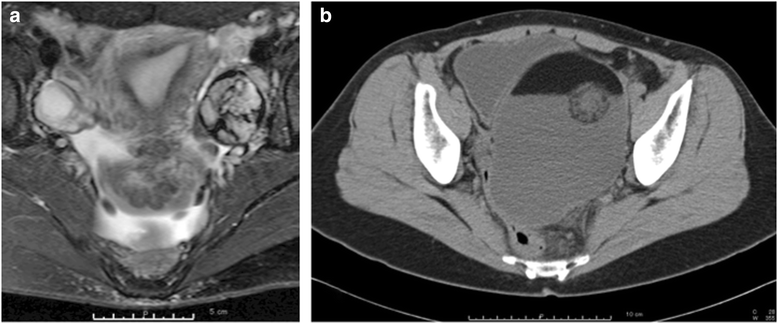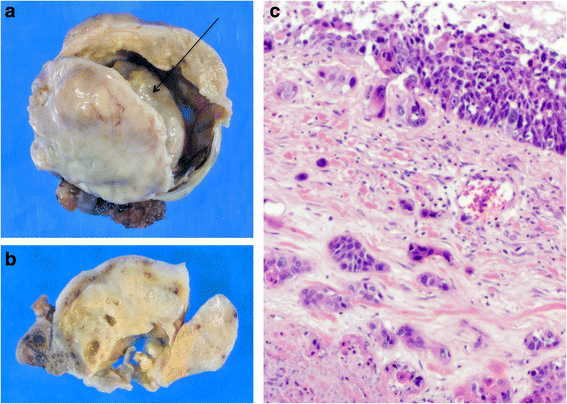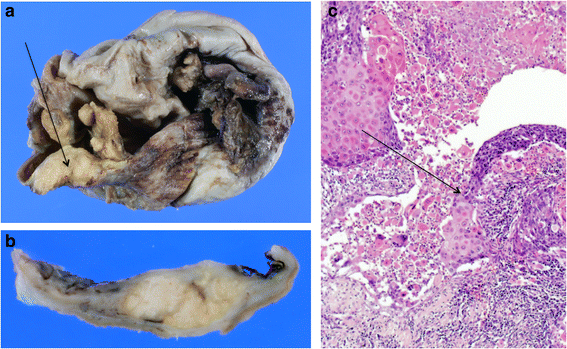Relevance of frozen sections and serum markers in invasive squamous cell carcinoma arising from ovarian mature cystic teratoma: two case reports
- PMID: 26801904
- PMCID: PMC4724162
- DOI: 10.1186/s13256-015-0783-5
Relevance of frozen sections and serum markers in invasive squamous cell carcinoma arising from ovarian mature cystic teratoma: two case reports
Abstract
Background: Ovarian mature cystic teratoma (MCT) is a common neoplasm in women. While malignant transformation of MCT is relatively rare, squamous cell carcinoma is the most frequent malignant neoplasm arising from MCT. Some tumor markers have been reported to be useful for prediction of MCT malignant transformation prior to operation. However, widely accepted use of these markers remains to be established. In the present study, we report the usefulness of frozen section assessment during operation, as well as preoperative measurement of tumor marker levels.
Case presentation: We present two cases of squamous cell carcinoma arising from ovarian MCT. The first case was a 45-year-old Asian woman referred to our hospital after her periodical company medical checkup, due to possible ovarian tumor. Image analysis suggested a dermoid cyst, and left salpingo-oophorectomy was performed. Because the cyst was histologically diagnosed as an invasive squamous cell carcinoma arising from an MCT, our patient underwent an additional preventative operation. The TNM classification and FIGO stage were T1aNXM0 and Ia, respectively. The second case was a 53 -year-old Asian woman who visited our hospital due to complaints of abdominal pain and urinary retention. Image analysis and laboratory data showing high serum levels of SCC antigen (normal range: < 1.5 ng/mL) and CA19-9 (normal range: < 37 U/mL), which strongly suggested malignant transformation of MCT. Frozen sections obtained during the operation were histologically analyzed to confirm malignancy, and our patient underwent an additional operation. The TNM classification and FIGO stage were T1aNXM0 and Ia, respectively.
Conclusions: We report the usefulness of frozen section assessment during operation, as well as preoperative measurement of tumor marker levels.
Figures



References
Publication types
MeSH terms
Substances
Supplementary concepts
LinkOut - more resources
Full Text Sources
Other Literature Sources
Medical
Research Materials

